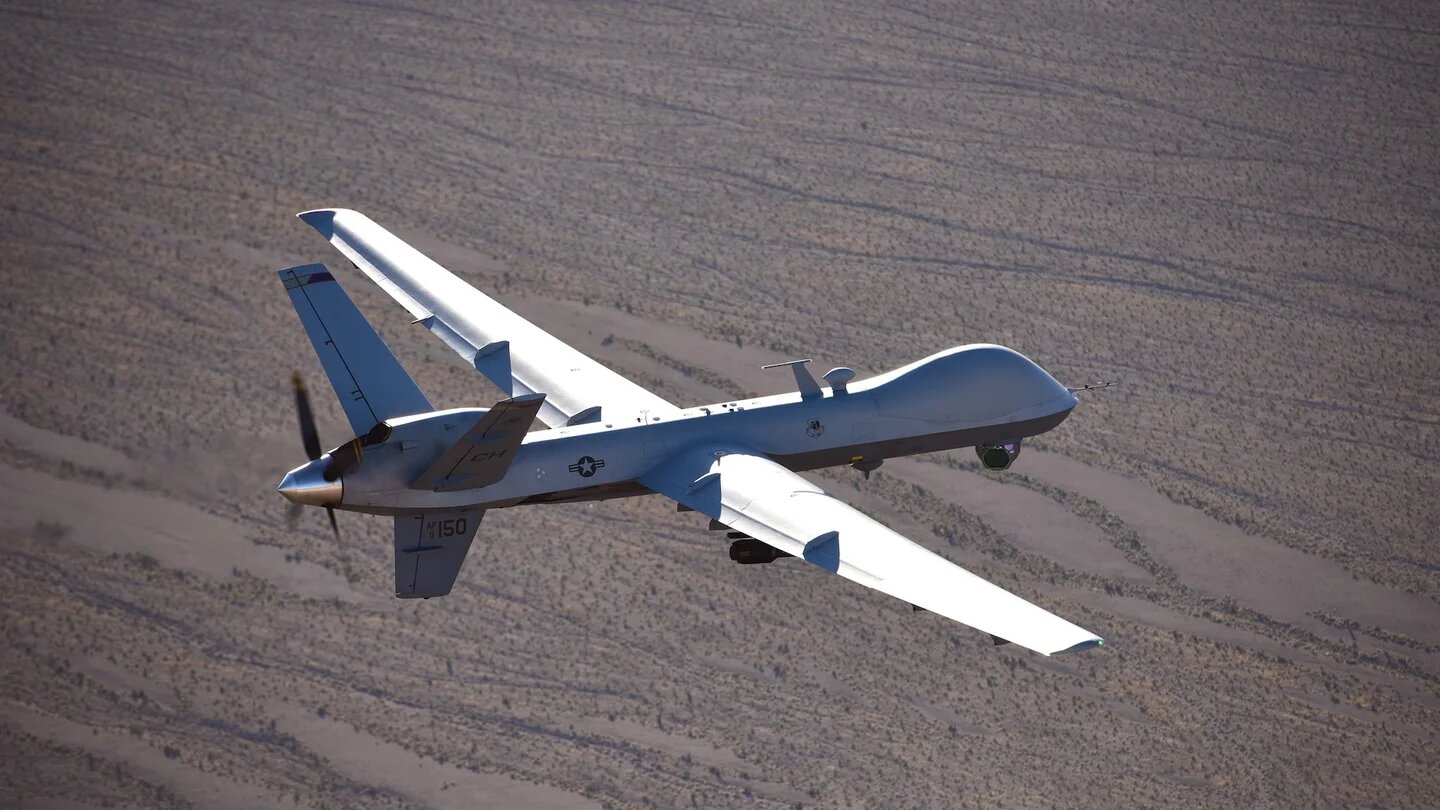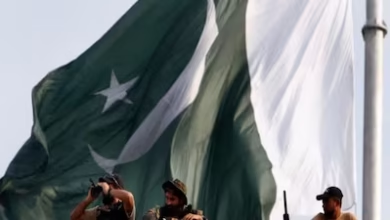US Drone, Russia Jet Crash: Updates So Far

- John Kirby, a spokesman for the White House's National Security Office, said, "We will express our concerns about this unsafe and unprofessional intercept."
- U.S. fighter jets intercepted two Russian TU-95 bombers in international airspace off Alaska’s coast, and “escorted them” for 12 minutes, according to the Pentagon.
When a Russian fighter jet and a large U.S. surveillance drone collided over the Black Sea on Tuesday, it was a rare but serious accident that led to a diplomatic protest from the U.S. and worries that Russia could get access to sensitive technology.
When the U.S. MQ-9 Reaper drone and the Russian Su-27 fighter jet crashed, U.S. and Russian officials gave different stories about what happened and blamed each other. But a Pentagon spokesman brought up the idea that the Defense Department might declassify and release video of the crash in the future.
The drone has not been found, according to defence officials. But the Pentagon wouldn’t say if there were any plans to pick up pieces of the Reaper.
Here’s what’s known — and uncertain — about the crash.
WHAT THE US SAYS HAPPENED
The Pentagon and the U.S. European Command said that two Russian Su-27 planes dumped fuel on the MQ-9 while it was doing routine surveillance over the Black Sea in international airspace. They said that the Russian jets flew around and in front of the drone several times for 30 to 40 minutes. Then, one of the Russian planes “hit the MQ-9’s propeller, forcing U.S. forces to bring it down in international waters,” they said.
Aerial Force The head of the U.S. Air Forces in Europe and Africa, Gen. James Hecker, said that the Russian jet’s actions “almost caused both aircraft to crash.” Brig. Gen. Pat Ryder, a spokesman for the Pentagon, said that the crash probably also hurt the Russian fighter jet, but the Su-27 was still able to land. He refused to say where it fell.
The Pentagon said that the drone was “well clear” of any land in Ukraine, but they didn’t say more. A U.S. defence official said it was operating west of Crimea over the Black Sea. The official spoke on condition of anonymity to provide mission details.
It’s not clear if the collision was an accident or intentional, but both sides agree the Russian aircraft were trying to intercept the drone.
WHAT RUSSIA SAYS HAPPENED
The Russian Defense Ministry said that the U.S. drone was flying near the Russian border and went into an area that Russian authorities had said was off limits. It said that the Russian military scrambled fighters to intercept the U.S. drone. It claimed that “as a result of sharp manoeuvre, the U.S. drone went into uncontrollable flight with a loss of altitude and collided with water surface.”
Russia has declared broad areas near Crimea off limits to flights. Ever since the 2014 annexation of Crimea and long before Russia invaded Ukraine last year, Moscow has charged that U.S. surveillance planes were flying too close to its borders while ignoring the notices issued by Russia.
Nations routinely operate in international airspace and waters, and no country can claim limits on territory outside of its own border.
The ministry said that the Russian planes were sent to intercept the drone, but they didn’t use their weapons and “didn’t come into contact” with it.
WHAT IS AN MQ-9 REAPER?
The MQ-9 Reaper is a large unmanned Air Force aircraft that is remotely operated by a two-person team. It has a control station on the ground and satellite equipment. Its wingspan is 66 feet (20 metres). The team includes a rated pilot who is responsible for flying the aircraft and an enlisted aircrew member who is charged with operating the sensors and guiding weapons.
The Reaper was often used for surveillance and airstrikes during the Iraq and Afghanistan wars. It can be armed or unarmed. It can carry up to eight laser-guided missiles, including Hellfire missiles and other high-tech weapons, and it can stay in place over a target for about 24 hours. It is about 36 feet long, 12 feet tall, and weighs about 4,900 pounds (11 metres long, 4 metres high, and 2,200 kilograms). It can fly at an altitude of up to 50,000 feet (15 kilometres) and has a range of about 1,400 nautical miles (2,500 kilometres) (2,500 kilometers).
The Reaper, which first began operating in 2007, replaced the Air Force’s smaller Predator drones. About $32 million is spent on each Reaper.
DIPLOMATIC DUST-UP
The collision triggered a diplomatic protest.
Anatoly Antonov was asked by the U.S. State Department to meet with Karen Donfried, the assistant secretary of state for Europe, on Tuesday.
“We are engaging directly with the Russians, again at senior levels, to convey our strong objections to this unsafe, unprofessional intercept, which caused the downing of the unmanned U.S. aircraft,” said State Department spokesman Ned Price.
John Kirby, a spokesman for the White House’s National Security Office, said, “We will express our concerns about this unsafe and unprofessional intercept.”
Defense Secretary Lloyd Austin had not talked to his Russian counterpart regarding the incident, Ryder said.
HAS IT HAPPENED BEFORE?
This is not the first time Russian aircraft have flown so close to U.S. aircraft in the Black Sea that it’s prompted the Pentagon to publicly condemn the incident for putting the crews at risk. In 2020, Russian jets crossed in front of a B-52 bomber that was flying over the Black Sea, and flew as close as 100 feet (30 metres) in front of the bomber’s nose, causing turbulence.
Russian jets have also buzzed U.S. warships during exercises in the Black Sea. In 2021, Russian warplanes flew close to the Navy destroyer USS Donald Cook while it was taking part in a big exercise. Before Russia’s invasion of Ukraine last year, U.S. warships went to the Black Sea more often in response to Russia’s attack on Crimea in 2014.
Most of the time, though, military intercepts in the air or on the water are normal. This has happened many times with Russian aircraft in the Pacific, especially in the north. Just last month, U.S. fighter jets intercepted two Russian TU-95 bombers in international airspace off Alaska’s coast, and “escorted them” for 12 minutes, according to the Pentagon.
And Russian aircraft have done similar missions, and also buzzed U.S. Navy ships in the Pacific. In most of the cases, the intercepts are deemed safe and professional.
It’s not clear if the Russian pilots were willing to get closer to the Reaper or dump fuel on it because they knew it was unmanned — and therefore there was no risk to an American pilot or crew. The intentional crashing of a manned aircraft, which could hurt or kill the crew, could be seen as an act of war.







Facebook Comments